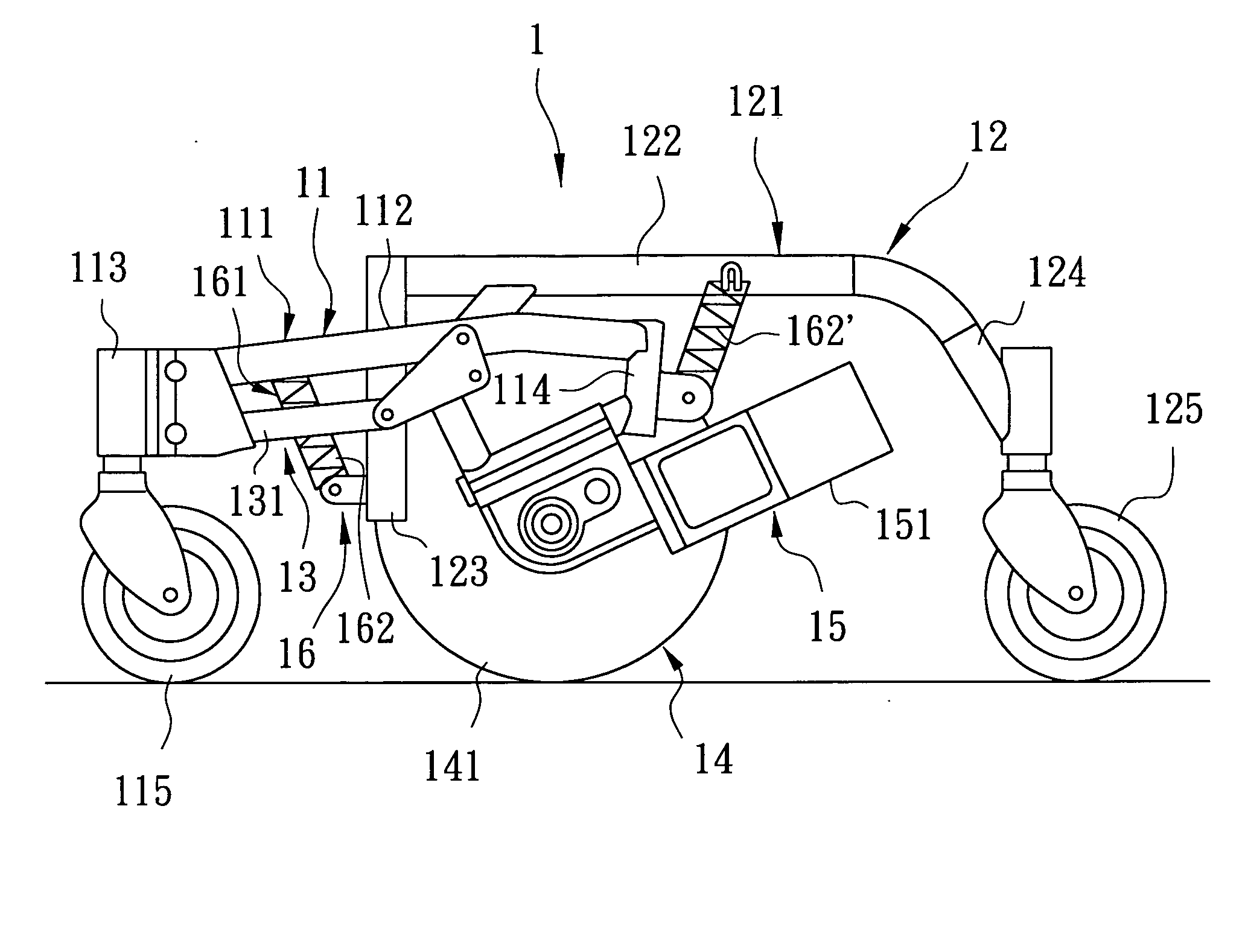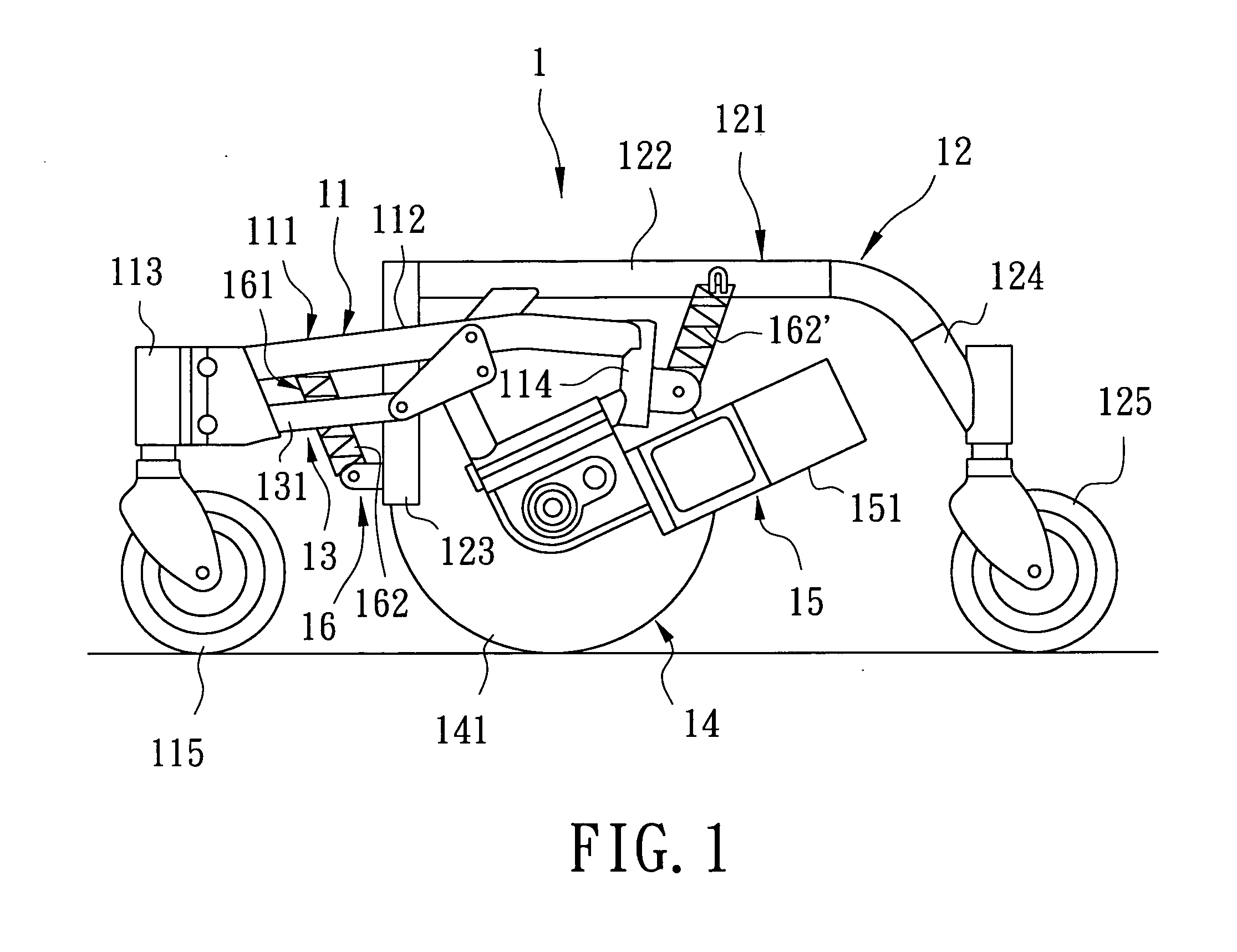Wheelchair suspension
- Summary
- Abstract
- Description
- Claims
- Application Information
AI Technical Summary
Benefits of technology
Problems solved by technology
Method used
Image
Examples
Embodiment Construction
[0027] A wheelchair suspension of this invention is incorporated in an electric wheelchair, and includes two side frame assemblies. Because the two side frame assemblies are similar in construction to each other, the structure and operation of only one side frame assembly will be described.
[0028] Referring to FIG. 5, a side frame assembly 2 of the preferred embodiment of a wheelchair suspension according to this invention includes a generally inverted U-shaped supporting frame unit 21, an upper link unit 22, a lower link unit 23, a drive wheel assembly 24, a connecting frame 25, a first resilient return device 26, a second resilient return device 27, a first caster assembly 28, and a rear caster assembly 29. The first and second resilient return devices 26, 27 are configured as coiled tension springs.
[0029] The supporting frame unit 21 includes a rider-supporting frame 211 for supporting the wheelchair rider, an inclined frame 212 extending integrally, frontwardly, and downwardly ...
PUM
 Login to View More
Login to View More Abstract
Description
Claims
Application Information
 Login to View More
Login to View More - R&D
- Intellectual Property
- Life Sciences
- Materials
- Tech Scout
- Unparalleled Data Quality
- Higher Quality Content
- 60% Fewer Hallucinations
Browse by: Latest US Patents, China's latest patents, Technical Efficacy Thesaurus, Application Domain, Technology Topic, Popular Technical Reports.
© 2025 PatSnap. All rights reserved.Legal|Privacy policy|Modern Slavery Act Transparency Statement|Sitemap|About US| Contact US: help@patsnap.com



